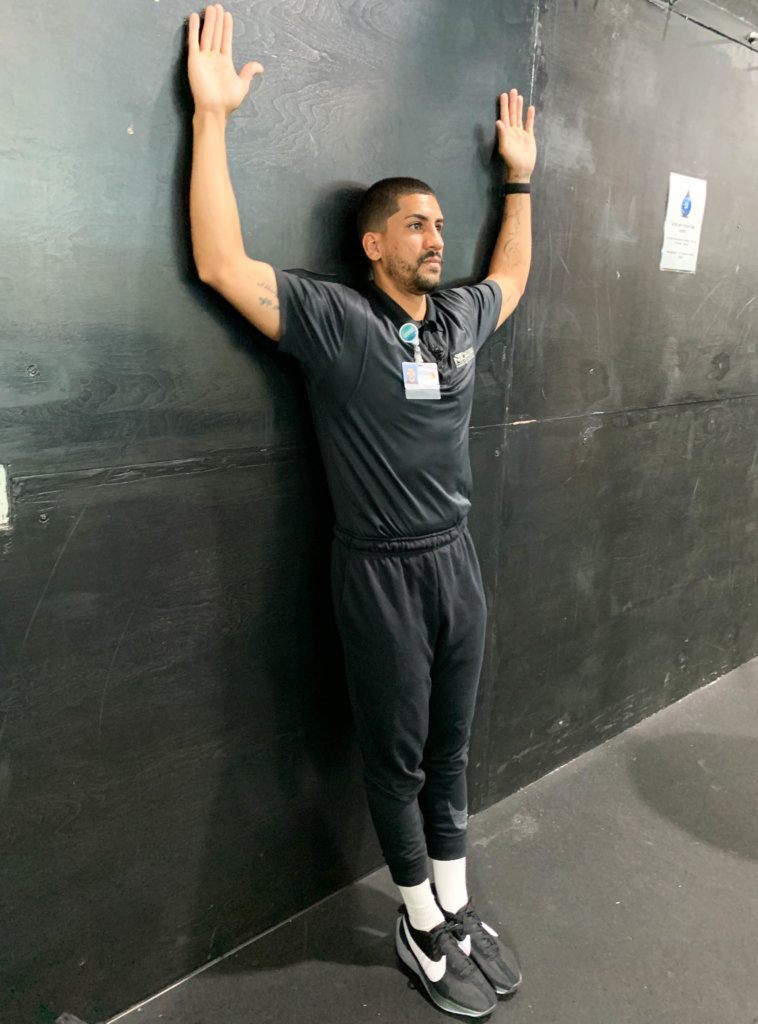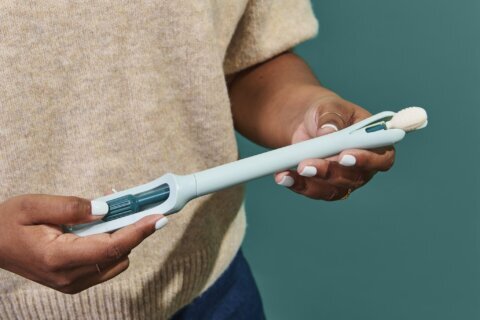Whether you’re slouching at a desk or hunched over a smartphone — bad posture can stress your body, but you can avoid potential health consequences by improving your posture.
“Posture can have huge ramifications on the body,” Orlando Health National Training Center exercise physiologist Nathaniel Melendez said.
Forty-seven percent of people who responded to a national survey by Orlando Health said they were concerned about poor posture and its impact on their health. Melendez finds that alarming.
Poor posture can cause headaches, jaw discomfort, neck and back pain, poor blood circulation and what’s called “compensated breathing” patterns.
Chest breathers with poor posture take more shallow breaths that are associated with anxiety and physiological fight-or-flight responses. Melendez said it’s better to take deeper breaths from your diaphragm.

Do you know about text neck?
For every inch your head moves out in front of your body when you’re looking down at a smartphone or tablet, it adds 10 pounds of pressure on your cervical spine.
“Say your head moves 4 inches in front of your body. That’s like the equivalent of having a 4-year-old sit on your shoulders,” Melendez said.
So, what’s correct?
Whether the screen is on a smartphone, tablet or computer — universal posture advice applies:
- Screen should be at eye level.
- Feet should be planted on the floor.
- Shoulders should be back.
- Back should be against the chair.
- Keep ears, shoulders and hips aligned.

Sitting at a desk, Melendez recommends not using the arm rests.
“In a perfect world, you’ll get a chair that’s not as comfortable as you want it to be so that way you’re motivated to move around,” Melendez said, adding that you should get up for a few minutes every half-hour that you’re sitting.
- Position seat to recline about 30 degrees.
- Sit back and allow the seat to support you.
- Arms should be relaxed with a gentle bend in the elbow.
- Head should touch the head rest with your chin level and shoulders back.
- Use the cruise control if possible to put your feet flat on the floor.
Melendez has a trick that can help keep drivers from slouching. Don’t adjust your mirrors once you’ve figured out where they should be.
“Fix the mirrors, the rear view mirrors and the side mirrors to where you’re in an upright position. And, that way you have the ideal posture,” he said.








